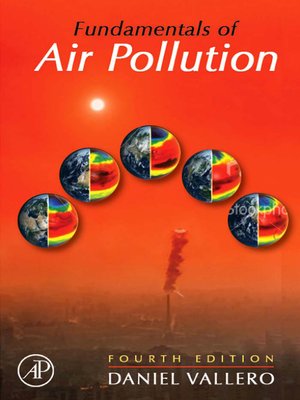
Sign up to save your library
With an OverDrive account, you can save your favorite libraries for at-a-glance information about availability. Find out more about OverDrive accounts.
Find this title in Libby, the library reading app by OverDrive.



Search for a digital library with this title
Title found at these libraries:
| Library Name | Distance |
|---|---|
| Loading... |
Fundamentals of Air Pollution is an important and widely used textbook in the environmental science and engineering community. Written shortly after the passage of the seminal Clean Air Act Amendments of 1990, the third edition was quite timely. Surprisingly, the text has remained relevant for university professors, engineers, scientists, policy makers and students up to recent years. However, in light of the transition in the last five years from predominantly technology-based standards (maximum achievable control technologies or MACTs) to risk-based regulations and air quality standards, the text must be updated significantly.
The fourth edition will be updated to include numerous MACTs which were not foreseen during the writing of the third edition, such as secondary lead (Pb) smelting, petroleum refining, aerospace manufacturing, marine vessel loading, ship building, printing and publishing, elastomer production, offsite waste operations, and polyethylene terephthalate polymer and styrene-based thermoplastic polymers production.
* Focuses on the process of risk assessment, management and communication, the key to the study of air pollution.
* Provides the latest information on the technological breakthroughs in environmental engineering since last edition
* Updated information on computational and diagnostic and operational tools that have emerged in recent years.
The fourth edition will be updated to include numerous MACTs which were not foreseen during the writing of the third edition, such as secondary lead (Pb) smelting, petroleum refining, aerospace manufacturing, marine vessel loading, ship building, printing and publishing, elastomer production, offsite waste operations, and polyethylene terephthalate polymer and styrene-based thermoplastic polymers production.
* Focuses on the process of risk assessment, management and communication, the key to the study of air pollution.
* Provides the latest information on the technological breakthroughs in environmental engineering since last edition
* Updated information on computational and diagnostic and operational tools that have emerged in recent years.







